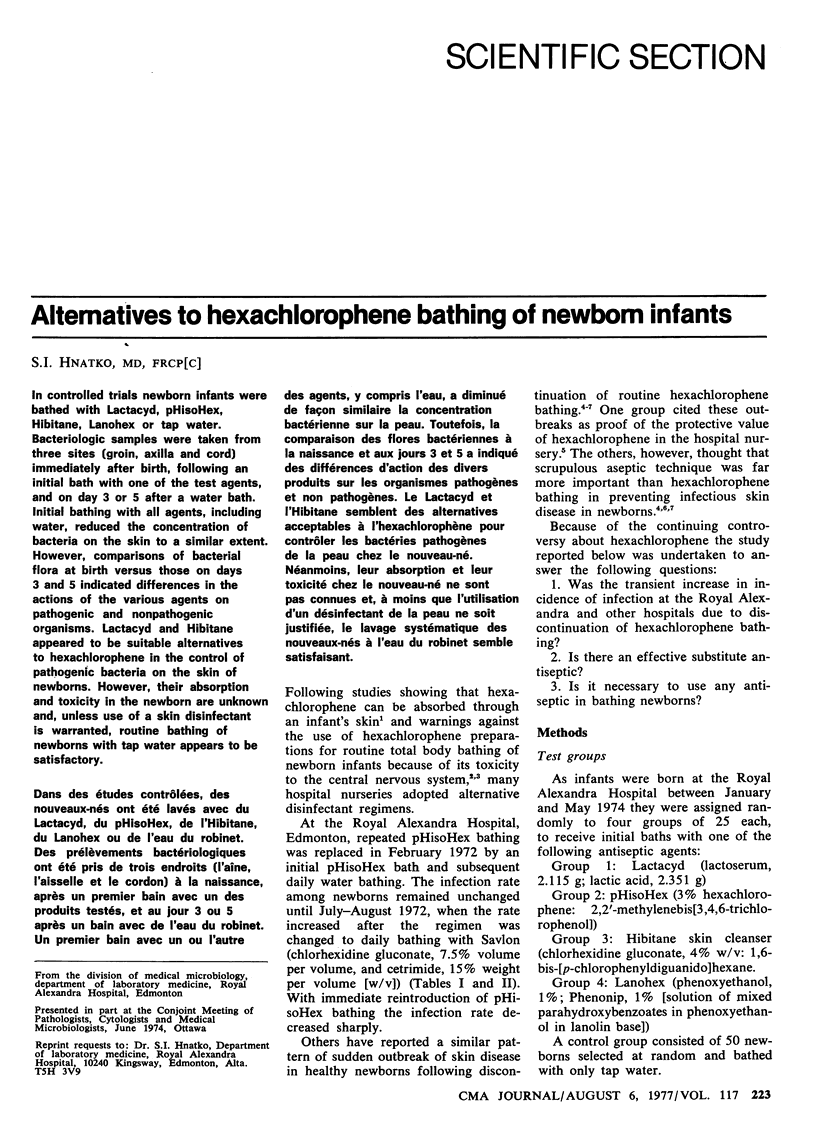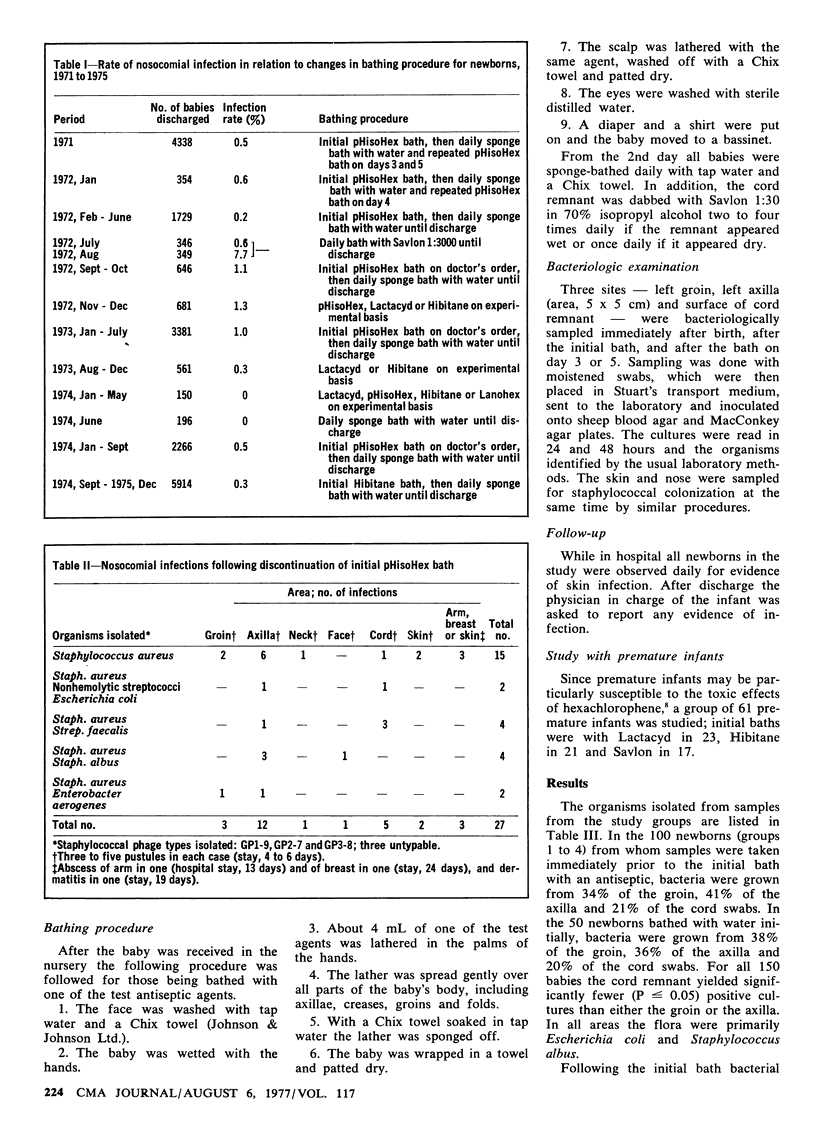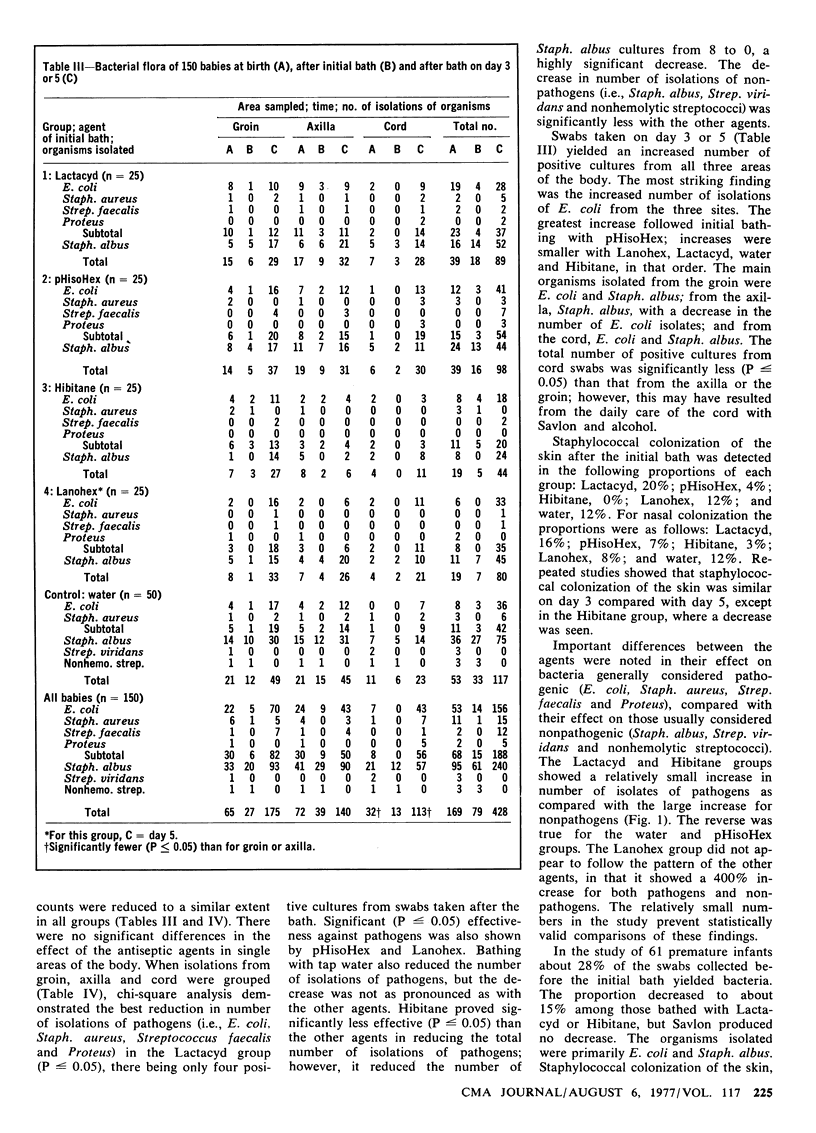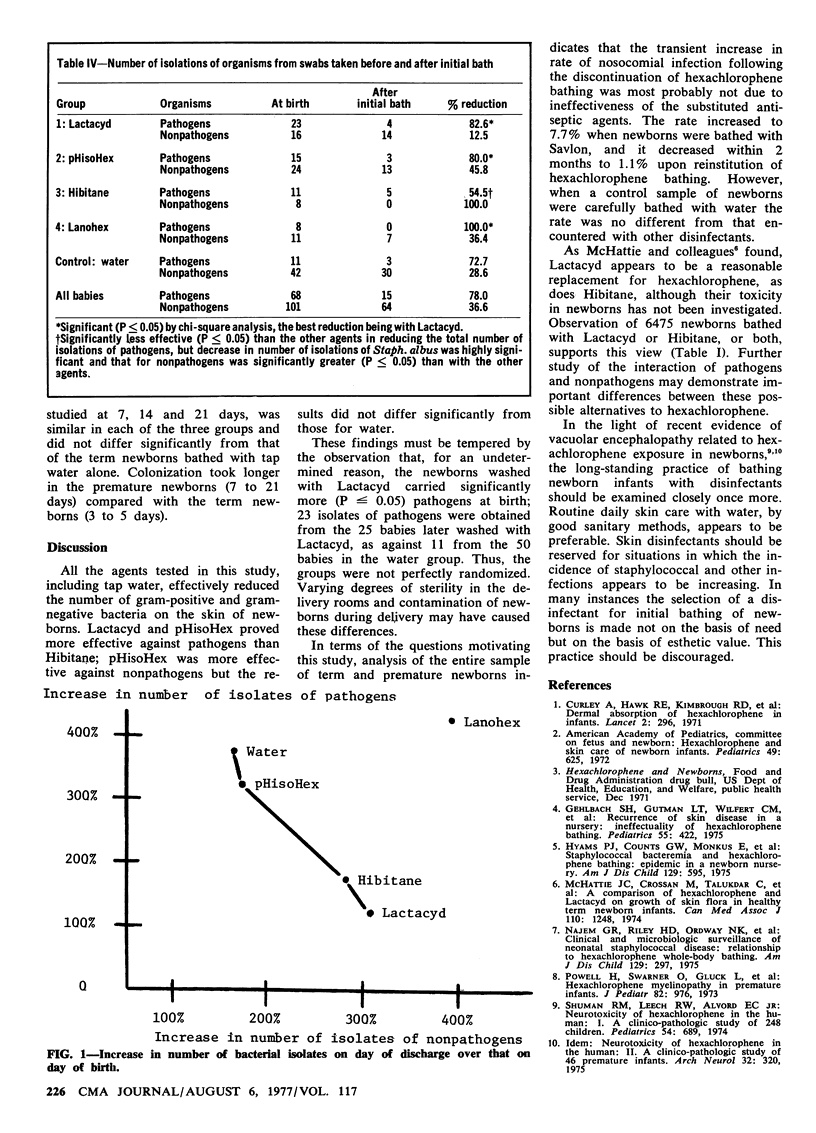Abstract
In controlled trials newborn infants were bathed with Lactacyd, pHisoHex, Hibitane, Lanohex or tap water. Bacteriologic samples were taken from three sites (groin, axilla and cord) immediately after birth, following an initial bath with one of the test agents, and on day 3 or 5 after a water bath. Initial bathing with all agents, including water, reduced the concentration of bacteria on the skin to a similar extent. However, comparisons of bacterial flora at birth versus those on days 3 and 5 indicated differences in the actions of the various agents on pathogenic and nonpathogenic organisms. Lactacyd and Hibitane appeared to be suitable alternatives to hexachlorophene in the control of pathogenic bacteria on the skin of newborns. However, their absorption and toxicity in the newborn are unknown and, unless use of a skin disinfectant is warranted, routine bathing of newborns with tap water appears to be satisfactory.
Full text
PDF



Selected References
These references are in PubMed. This may not be the complete list of references from this article.
- Curley A., Kimbrough R. D., Hawk R. E., Nathenson G., Finberg L. Dermal absorption of hexochlorophane in infants. Lancet. 1971 Aug 7;2(7719):296–297. doi: 10.1016/s0140-6736(71)91337-7. [DOI] [PubMed] [Google Scholar]
- Gehlbach S. H., Gutman L. T., Wilfert C. M., Brumley G. W., Katz S. L. Recurrence of skin disease in a nursery: ineffectuality of hexachlorophene bathing. Pediatrics. 1975 Mar;55(3):422–424. [PubMed] [Google Scholar]
- Powell H., Swarner O., Gluck L., Lampert P. Hexachlorophene myelinopathy in premature infants. J Pediatr. 1973 Jun;82(6):976–981. doi: 10.1016/s0022-3476(73)80428-7. [DOI] [PubMed] [Google Scholar]
- Shuman R. M., Leech R. W., Alvord E. C., Jr Neurotoxicity of hexachlorophene in the human: I. A clinicopathologic study of 248 children. Pediatrics. 1974 Dec;54(6):689–695. [PubMed] [Google Scholar]


